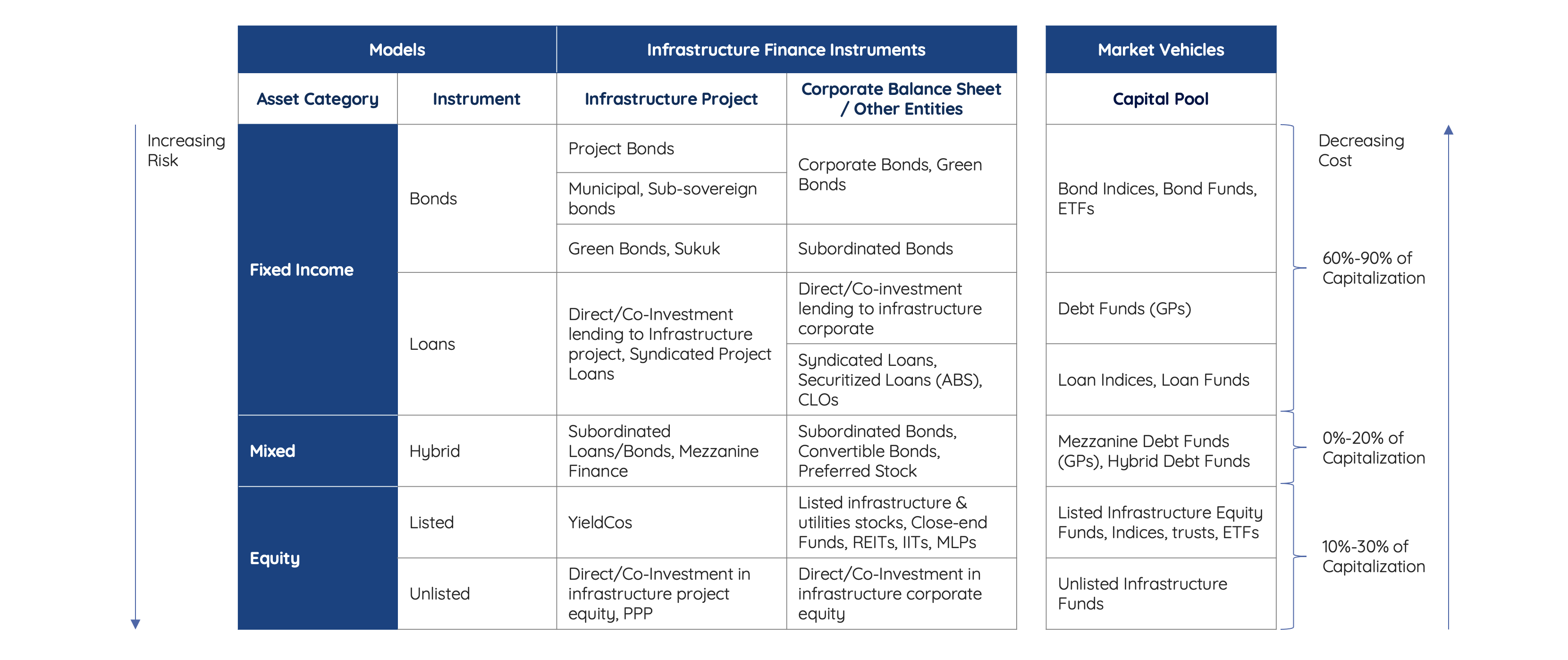Financing Public-Private Partnership (PPP) projects is a multifaceted endeavor that requires a strategic approach to leverage various sources of capital effectively. In recent years, the landscape of infrastructure financing has evolved significantly, driven by the increasing demand for sustainable development and the need for innovative financial solutions. Understanding the diverse range of financing models, infrastructure finance instruments, and market vehicles is crucial for stakeholders aiming to navigate this complex terrain.

Figure. Sources of Financing for PPP Projects.
One of the primary sources of financing for PPP projects is through fixed income instruments such as bonds. Project bonds, particularly in the infrastructure sector, have gained prominence due to their ability to attract long-term institutional investors seeking stable returns. These bonds, whether issued by project entities or supported by municipal or sub-sovereign governments, provide a reliable source of capital for infrastructure development. Moreover, the emergence of green bonds and Sukuk has opened up avenues for financing projects with a focus on environmental sustainability, aligning with the global shift towards green infrastructure investments.
Alongside bonds, loans play a pivotal role in financing PPP projects. Direct lending to infrastructure projects or syndicated project loans offers flexibility in structuring financing arrangements to suit the specific needs of each project. Additionally, securitized loans, such as asset-backed securities (ABS) and collateralized loan obligations (CLOs), provide liquidity and risk management solutions, attracting a diverse pool of investors.
Hybrid financing models, combining elements of debt and equity, offer innovative solutions for funding PPP projects. Subordinated loans or bonds, mezzanine finance, and convertible instruments provide a bridge between debt and equity financing, catering to projects with varying risk profiles. These instruments are often utilized in conjunction with traditional debt and equity sources to optimize capital structures and enhance project viability.
Equity financing, both listed and unlisted, remains integral to PPP project funding. Listed vehicles like YieldCos, Real Estate Investment Trusts (REITs), and Master Limited Partnerships (MLPs) provide access to capital markets and offer liquidity to investors. On the other hand, direct investment in infrastructure project equity or PPP equity provides long-term exposure to cash flows generated by underlying assets, attracting institutional investors seeking stable returns.
In the realm of unlisted equity, infrastructure funds play a crucial role in mobilizing capital for PPP projects. These funds, managed by experienced General Partners (GPs), pool resources from institutional investors to deploy across a diversified portfolio of infrastructure assets. By facilitating direct co-investment opportunities and leveraging expertise in project development and management, unlisted infrastructure funds contribute significantly to financing PPP initiatives.
As the demand for infrastructure investment continues to grow, there is a need for innovative financing mechanisms and collaborative approaches to address funding gaps effectively. Public-private partnerships represent a viable framework for mobilizing resources and sharing risks between governments, private investors, and communities. By harnessing the diverse array of financing sources, models, and instruments available, stakeholders can unlock the full potential of PPP projects to drive sustainable economic growth and societal development. However, it’s essential to ensure transparency, accountability, and alignment with socio-economic objectives to foster trust and confidence among all stakeholders involved in PPP ventures.